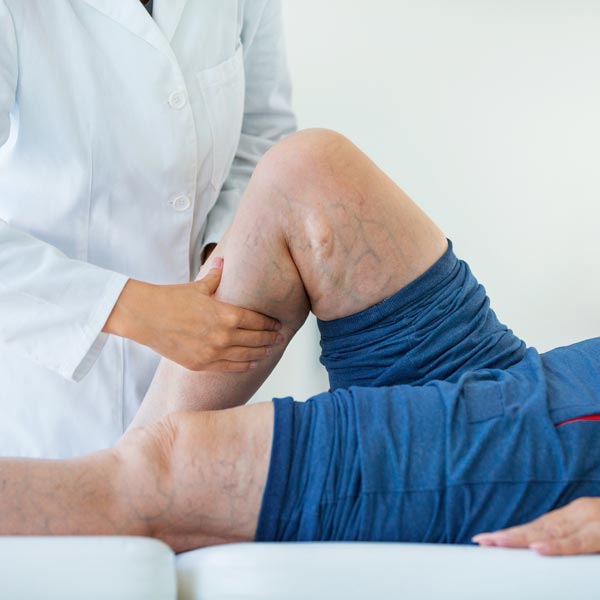Venous Disease
Deep Vein Thrombosis
DVT occurs when a blood clot forms in the deep venous system, predominantly in the legs. Several medical conditions increase the risk of DVT, including cancer and trauma. Other risk factors include older age, surgery, oral contraceptives, pregnancy, the postnatal period, and genetic factors, such as non-O blood type. Additionally, being immobile due to bed rest or sitting on long flights can also increase the risk for DVT.

Symptoms of Deep Vein Thrombosis
Symptoms of a DVT may include leg pain, swelling, redness, warmth, and or large bulging superficial veins. At California Vein & Vascular Centers patients may undergo an ultrasound screening by a trained technologist for evaluation of DVT. If the diagnosis is DVT, treatment begins immediately to reduce the risk of the blood clot growing or a piece of the clot potentially breaking loose and flowing to the lungs (pulmonary embolism).
Treatment of DVT
DVT is treated with anticoagulant medications alone or in combination with catheter-directed thrombolysis. Anticoagulant Medications or blood-thinning medicines include heparin and warfarin (such as Coumadin) given through an injection in a vein (IV), or by mouth, respectively.
Dr. Ahluwalia will treat patients, when appropriate, with catheter-directed thrombolysis. For this procedure, he inserts a tiny catheter or tube into the leg vein and injects a clot-busting drug. Benefits include: If the vein appears narrowed, a balloon angioplasty or stent may be placed to widen the affected area in the vein and prevent future blockages. Steps are taken to minimize the risk of stroke and problems with bleeding during the procedure.
Benefits Include
- Improved blood flow and reduction or elimination of the related symptoms and effects without the need for more invasive surgery
- Renewed circulation previously blocked by a clot
- Less blood loss than with traditional surgical treatment
- No surgical incision is required—only a small nick in the skin that does not have to be stitched closed
- Relatively brief hospital stay



